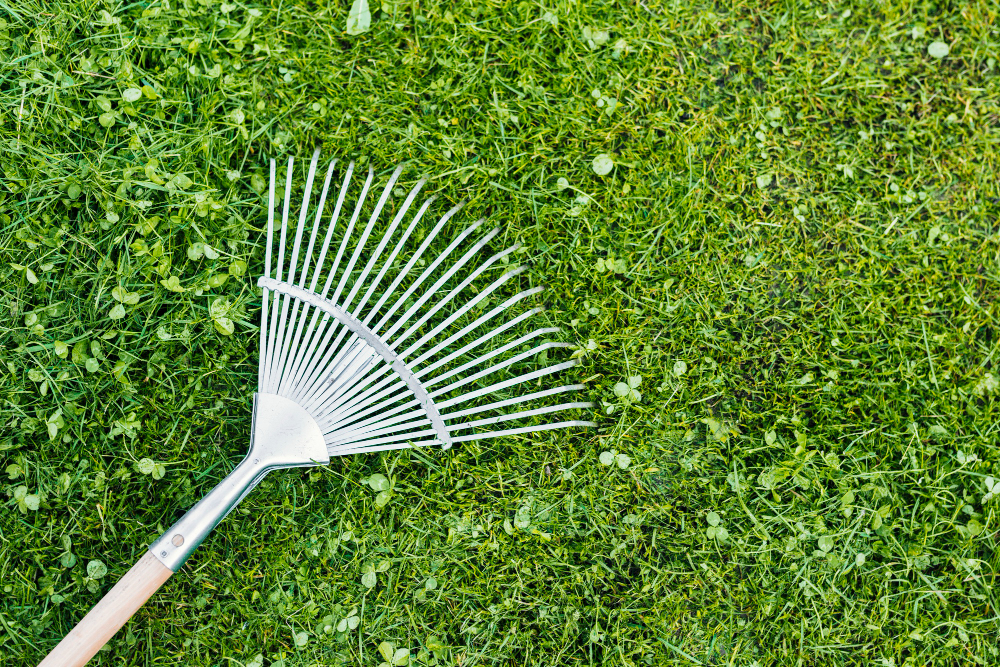Avoid These Common Lawn Care Mistakes

A well-maintained lawn can significantly enhance the beauty and value of your property. However, achieving that lush, green look isn't always straightforward. Many homeowners unknowingly make mistakes that can harm their lawns. In this blog post, we'll explore common lawn care mistakes and how you can avoid them. Plus, if you're in Orlando, FL, and need professional help, From The Ground Up Landscaping offers free estimates to get your lawn looking its best.
Overwatering or Underwatering
The Importance of Proper Watering
Watering is crucial for lawn health, but more isn't always better. Overwatering can drown the roots and promote fungal growth, while underwatering can stress the grass and cause it to turn brown.
Signs of Overwatering
- Puddles or runoff after watering
- A spongy feel when walking on the lawn
- Presence of mushrooms or other fungi
Signs of Underwatering
- Grass blades that fold or wilt
- Soil that's dry and hard
- Grass that doesn't spring back after being stepped on
How to Water Correctly
- Water deeply but infrequently to encourage deep root growth.
- Aim for about 1 inch of water per week, including rainfall.
- Water early in the morning to minimize evaporation and fungal growth.
Mowing Mistakes
Cutting Too Short
Mowing the lawn too short, also known as "scalping," can stress the grass and make it more susceptible to weeds and diseases.
Dull Mower Blades
Using dull mower blades tears the grass rather than cutting it cleanly, leading to ragged edges that can turn brown and invite disease.
Correct Mowing Practices
- Set your mower blades to the appropriate height, usually about 3 inches for most grass types.
- Keep your mower blades sharp and clean.
- Avoid mowing more than one-third of the grass height at a time.
Ignoring Soil Health
The Role of Soil in Lawn Care
Healthy soil is the foundation of a healthy lawn. Ignoring soil health can lead to poor grass growth and increased susceptibility to pests and diseases.
Signs of Poor Soil Health
- Thin or patchy grass
- Excessive weed growth
- Poor drainage
How to Improve Soil Health
- Test your soil to determine its pH and nutrient levels.
- Aerate your lawn to reduce soil compaction and improve root growth.
- Add organic matter like compost to enrich the soil.
Fertilizing Errors
Over-Fertilization
Applying too much fertilizer can burn your grass and lead to nutrient imbalances.
Under-Fertilization
Not using enough fertilizer can result in weak, pale grass that's more prone to disease and pests.
Proper Fertilizing Techniques
- Use a slow-release fertilizer for even nutrient distribution.
- Follow the recommended application rates on the fertilizer package.
- Fertilize during the growing season, usually in the spring and fall.
Neglecting Pest and Weed Control
The Impact of Pests and Weeds
Pests and weeds can quickly take over a lawn if not properly managed, leading to unsightly and unhealthy grass.
Common Lawn Pests
- Grubs
- Chinch bugs
- Sod webworms
Effective Pest and Weed Management
- Regularly inspect your lawn for signs of pests and weeds.
- Use natural or chemical treatments as needed.
- Maintain a healthy lawn to naturally resist pests and weeds.
Not Aerating the Lawn
Why Aeration Matters
Aeration helps to alleviate soil compaction, allowing air, water, and nutrients to reach the grass roots more effectively.
Signs Your Lawn Needs Aeration
- Bare or thin patches
- Water pooling on the surface after rain
- Difficulty inserting a screwdriver into the soil
How to Aerate Your Lawn
- Use a core aerator to remove small plugs of soil from the lawn.
- Aerate during the growing season when the grass can quickly recover.
- Follow up with overseeding and fertilizing to encourage new growth.
Inconsistent Lawn Care Routine
The Importance of Consistency
Inconsistent lawn care can lead to a range of issues, from uneven growth to increased vulnerability to pests and diseases.
Building a Lawn Care Schedule
- Mow your lawn regularly, about once a week during the growing season.
- Water deeply but infrequently, as discussed earlier.
- Fertilize according to the needs of your grass type and soil conditions.
- Inspect your lawn regularly for signs of pests, weeds, and other issues.
When to Seek Professional Help
Benefits of Hiring a Professional
Sometimes, despite your best efforts, your lawn may still struggle. Hiring a professional lawn care service can provide the expertise and resources needed to get your lawn back on track.
Choosing the Right Lawn Care Service
- Look for companies with good reviews and a solid reputation.
- Ask about their qualifications and experience.
- Get estimates from multiple companies to compare services and pricing.
From The Ground Up Landscaping
If you're in Orlando, FL, and need professional lawn care assistance, consider contacting From The Ground Up Landscaping. They offer free estimates and can provide expert advice and services to keep your lawn looking its best.
Conclusion
Avoiding common lawn care mistakes can make a significant difference in the health and appearance of your lawn. By following the tips outlined in this blog post, you'll be well on your way to achieving a lush, green lawn that enhances your property's beauty and value.
And remember, if you're looking for sod companies in Orlando, FL, contact From The Ground Up Landscaping today for free estimates. They have the expertise and resources to help you achieve the lawn of your dreams.